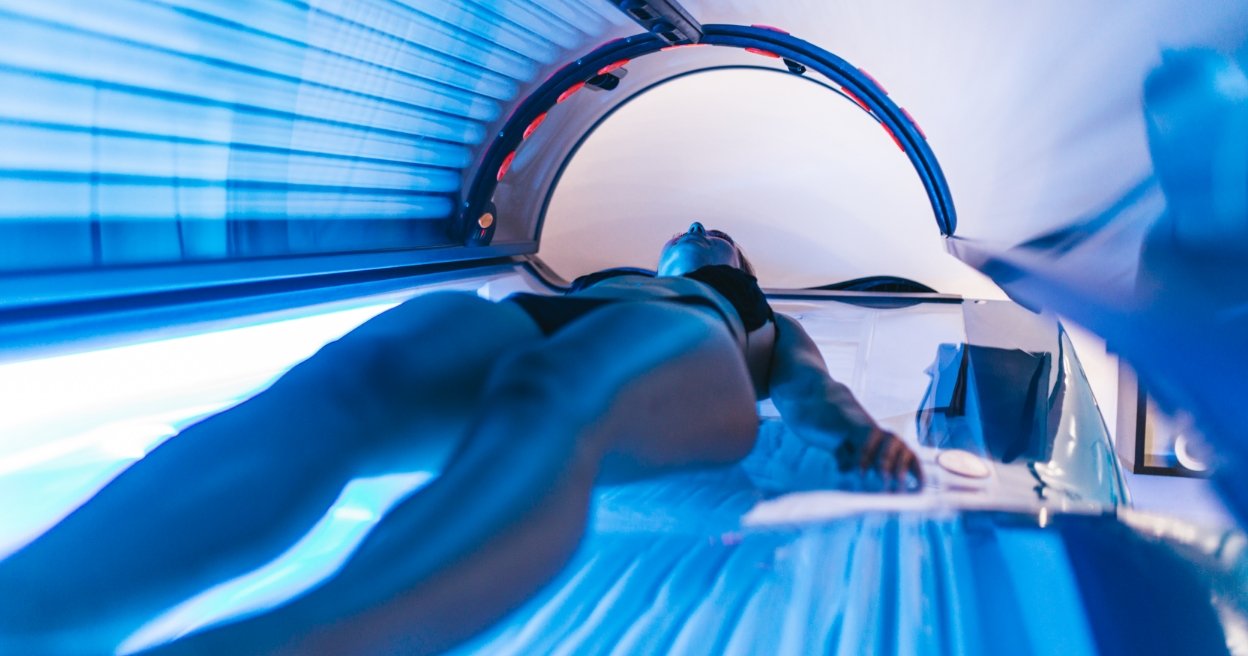Artificial tanning beds: hazardous to health, but allowed

lScientific and medical evidence leaves no doubt about the health risks associated with artificial tanning. As the World Health Organization (WHO) has warned for years, “cancer, sunburn, accelerated skin aging, eye inflammation and temporary immunosuppression are associated with the use of tanning devices.”
There is also strong evidence that artificial exposure to ultraviolet rays can lead to tanning addiction.
As for cancer, this is the most serious effect. Recent research shows how this practice increases the risk of developing melanoma. As early as 2006, a meta-analysis of 19 epidemiological studies found an even higher risk of melanoma when exposure to artificial UV rays begins before age 30.
Since then, several international studies and meta-analyses have confirmed that the younger you are at your first indoor tanning session, the higher your risk of developing skin cancer (melanoma).
The annual number of sessions, as well as the total duration of exposure, also directly correlates with increased risk.
Market comes before health
Since January 2016, the sale of tanning machines to private individuals has been prohibited in France. The public health measure comes 17 years after the International Agency for Research on Cancer, an agency of the WHO, classified artificial ultraviolet radiation as a carcinogen. However, the ban remains only theoretical.
For this reason, the Directorates General of the French Ministries of Health and Consumer Affairs prepared a draft which, in accordance with the legal mechanism between Europe and its Member States, was submitted to the European Commission. And then the conflict began. It turns out that if a draft national regulation could impede the free movement of goods, Europe could block its implementation. This is exactly what happened in the case of artificial tanning.
The reason the European Commission blocked the French decree is that tanning equipment is subject to another European regulation (Directive 2014/35/EU) called “low voltage”, which regulates all electrical equipment connected to the electrical network.
The compliance of tanning equipment with this directive is based on a technical standard (EN 60335-2-27), which stipulates that tanning equipment of type “UV3” (according to regulation No. 2013-1261) can be used by individuals, provided that electrical safety is guaranteed. Therefore, any equipment that meets these requirements can move freely throughout the European Union.
Health protection arguments failed to undermine the logic of European regulation: the Commission therefore rejected a draft French regulation that would have prevented the free circulation on the European market of solariums intended for private use.
All other provisions of the regulation, intended, among other things, to strengthen the information provided to users about the health risks of tanning beds, as well as the monitoring of the devices, have not yet been implemented.
In a tanning bed you are exposed to UV index 12 radiation.
No less dangerous is exposure to solar ultraviolet radiation, which the ICRC also classifies as a clear carcinogen. At the initiative of the authorities, preventive campaigns are regularly launched against the risks of unprotected sun exposure. This message seems to be catching on, especially among the little ones (sunglasses, UV protection t-shirts, beach watches, etc.).
It is therefore paradoxical to be exposed to artificial UV rays, sessions of which can be the equivalent of tropical sun with a UV index of 12. The UV index expresses the intensity of ultraviolet radiation and the risk it poses to health: more details beyond index 10, the risks are extremely high.
